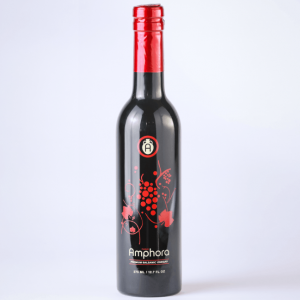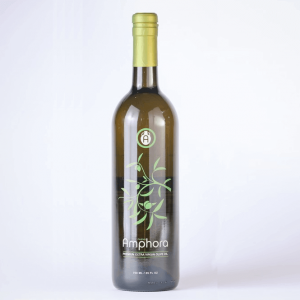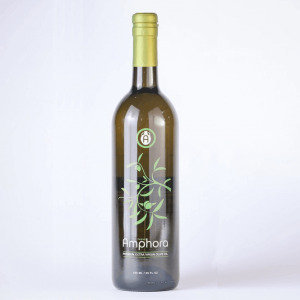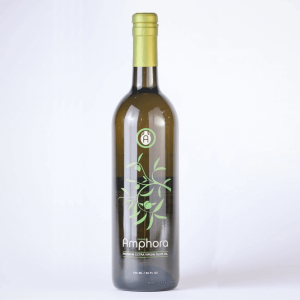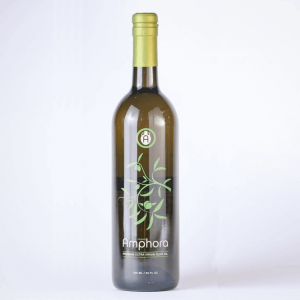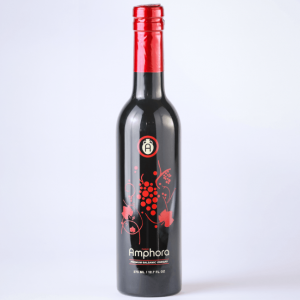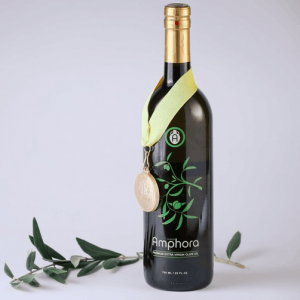Aged Elderflower White Balsamic Vinegar
Elderflower insufed white balsamic vinegar has delicate notes of honey suckle. Perfect to combine with lemon olive oil for a delicious emulsion!
Herbs De Provence Olive Oil
Notes of savory thyme and bay leaf, our all natural Herbs de Provence is a show stopper when drizzled on chicken, rubbed on turkey before roasting, for bread dipping and aioli.
Basil Olive Oil
Fresh, green and herbal. Basil and olive oil are two integral ingredients in Mediterranean cooking and it was just obvious to us that the two would be wonderful together. Notes: Try it on a summer salad or caprice and let your taste buds travel to the shores of the Mediterranean.
Garlic Olive Oil
Our Garlic Olive Oil actually gives off the flavor of pungent, fresh garlic. Since garlic and olive oil are almost always used together in Mediterranean cooking, you can use this in just about anything.
Persian Lime Olive Oil
Zesty Persian lime is married with extra virgin olive oil for an unbelievably fresh, fragrant burst of citrus. This infused oil will take your recipe to the next flavor dimension. Fantastic with fish, poultry, marinades and dressings. Great when paired with our Blackberry-Ginger balsamic vinegar.
(NEW) Fused Green Lemon Olive Oil (Eureka Green Limonato)
(NEW) Fused Green Lemon Olive Oil (Eureka Green Limonato)
Our new, current lemon oil is a Fused, early harvest Chilean green lemo (Eureka Green Limonato) was made by crushing green Arbequina olives alongside estate grown green Eureka Lemons in April 2025. The result is an incredibly complex, pungent fusion. By harvesting unripe lemons and olives grown side by side, we achieved maximum green lemon aroma in a powerfully fragrant and floral oil! Super concentrated. A little goes a long way! This is a very unique fused olive oil! It pairs beautifully with Peach white balsamic, as well as these other white balsamics: Honey Ginger, Suyo Cucumber, & Strawberry and Watermelon rose. Also lovely with our Fig or Tangerine dark balsamic. A terrific addition to vibrant vinaigrettes, seafood marinades, spritzers and fruit forward glazed.
Aged Suyo Cucumber White Balsamic
Our crisp, zippy Suyo Cucumber White Balsamic is quintessential in dressings, marinades, shrubs, agua frescas, vinaigrettes and more. Use it to add an exciting zing to your next caprese salad or add a splash to your next shrimp cocktail.
Pairs wonderfully with fused lemon olive oil, garlic olive, ginger and black garlic olive oil, lime olive oil, Baklouti chili olive oil, dill olive oil and more. The possibilities are endless.
(NEW) Peruvian Coratina (Robust Intensity – Highest Polyphenol – Spring Harvest 2025)
(NEW) Peruvian Coratina (Robust Intensity – Highest Polyphenol – Spring Harvest 2025)
| Harvest: Peru 2025 ? Harvest Date: The fresher the better! Olive oils are healthier and more flavorful when they’re consumed fresh! | Bio-Phenols: 580.3 ? Polyphenols – Antioxidant substances found in EVOO. The higher the better! Polyphenols extend the shelf-life of an oil & also determine the “style” in terms of bitterness and pungency. Our high phenol oils are being recommended by health professionals all over the world. |
| Peroxide: 3.9 ? Peroxide: Peroxide Value – (PV) The lower the better! Must be equal or less than 20. The primary measurement of the rancidity of a particular extra virgin olive oil. PV is affected by procedures used in processing and storing of the oil. Our average PV at time of crush is around 4! |
Oleic: 71.8 ? Oleic Acid: Legal limit is 55%. The higher the better. Our average is around 77%! Our bodies absorb peroxidized fats we consume and incorporate them into your cells, oleic acid’s superior resistance to free radical attacks also protects your cell membranes, proteins, and DNA from being damaged, even as it protects the oil from spoiling. |
| Dags: 91.0 ? DAGS :DAGs are important shelf-life indicators and can be used to determine the shelf life (or lack thereof) of an oil at any time in its life. Fresh Olive Oil made from sound fruit should result in a DAG content of 85% or higher whereas the processing of rotten and or fermented olives will produce fresh oil with low DAGs indicating a very short shelf-life. | FFA: .22 ? FFA: Free Fatty Acid – The lower, the better. The IOC requires that this number be below 0.8 in order to be considered Extra Virgin grade. Our average is about 0.18! The lower the FFA, the higher the smoke point of the oil. |
(NEW) Chilean Arbequina (Mild/Medium Intensity – Spring Harvest 2025)
| Harvest: May 2025 ? Harvest Date: The fresher the better! Olive oils are healthier and more flavorful when they’re consumed fresh! | Bio-Phenols: 319.9 ? Polyphenols – Antioxidant substances found in EVOO. The higher the better! Polyphenols extend the shelf-life of an oil & also determine the “style” in terms of bitterness and pungency. Our high phenol oils are being recommended by health professionals all over the world. |
| Peroxide: 3.6 ? Peroxide: Peroxide Value – (PV) The lower the better! Must be equal or less than 20. The primary measurement of the rancidity of a particular extra virgin olive oil. PV is affected by procedures used in processing and storing of the oil. Our average PV at time of crush is around 4! |
Oleic: 75.12 ? Oleic Acid: Legal limit is 55%. The higher the better. Our average is around 77%! Our bodies absorb peroxidized fats we consume and incorporate them into your cells, oleic acid’s superior resistance to free radical attacks also protects your cell membranes, proteins, and DNA from being damaged, even as it protects the oil from spoiling. |
| Dags: 90 ? DAGS :DAGs are important shelf-life indicators and can be used to determine the shelf life (or lack thereof) of an oil at any time in its life. Fresh Olive Oil made from sound fruit should result in a DAG content of 85% or higher whereas the processing of rotten and or fermented olives will produce fresh oil with low DAGs indicating a very short shelf-life. | FFA: .21 ? FFA: Free Fatty Acid – The lower, the better. The IOC requires that this number be below 0.8 in order to be considered Extra Virgin grade. Our average is about 0.18! The lower the FFA, the higher the smoke point of the oil. |
(NEW) Chilean Picual (Robust Intensity – High Phenol – Spring Harvest 2025)
| Harvest: May 2025 ? Harvest Date: The fresher the better! Olive oils are healthier and more flavorful when they’re consumed fresh! | Bio-Phenols: 490.8 ? Polyphenols – Antioxidant substances found in EVOO. The higher the better! Polyphenols extend the shelf-life of an oil & also determine the “style” in terms of bitterness and pungency. Our high phenol oils are being recommended by health professionals all over the world. |
| Peroxide: 4.4 ? Peroxide: Peroxide Value – (PV) The lower the better! Must be equal or less than 20. The primary measurement of the rancidity of a particular extra virgin olive oil. PV is affected by procedures used in processing and storing of the oil. Our average PV at time of crush is around 4! |
Oleic: 79.3 ? Oleic Acid: Legal limit is 55%. The higher the better. Our average is around 77%! Our bodies absorb peroxidized fats we consume and incorporate them into your cells, oleic acid’s superior resistance to free radical attacks also protects your cell membranes, proteins, and DNA from being damaged, even as it protects the oil from spoiling. |
| Dags: 93 ? DAGS :DAGs are important shelf-life indicators and can be used to determine the shelf life (or lack thereof) of an oil at any time in its life. Fresh Olive Oil made from sound fruit should result in a DAG content of 85% or higher whereas the processing of rotten and or fermented olives will produce fresh oil with low DAGs indicating a very short shelf-life. | FFA: .14 ? FFA: Free Fatty Acid – The lower, the better. The IOC requires that this number be below 0.8 in order to be considered Extra Virgin grade. Our average is about 0.18! The lower the FFA, the higher the smoke point of the oil. |
(NEW) Chilean Arbequina (Robust Intensity – High Polyphenol – Spring Harvest 2025)
| Harvest: May 2025 ? Harvest Date: The fresher the better! Olive oils are healthier and more flavorful when they’re consumed fresh! | Bio-Phenols: 502.9 ? Polyphenols – Antioxidant substances found in EVOO. The higher the better! Polyphenols extend the shelf-life of an oil & also determine the “style” in terms of bitterness and pungency. Our high phenol oils are being recommended by health professionals all over the world. |
| Peroxide: 3.8 ? Peroxide: Peroxide Value – (PV) The lower the better! Must be equal or less than 20. The primary measurement of the rancidity of a particular extra virgin olive oil. PV is affected by procedures used in processing and storing of the oil. Our average PV at time of crush is around 4! |
Oleic: 74.1 ? Oleic Acid: Legal limit is 55%. The higher the better. Our average is around 77%! Our bodies absorb peroxidized fats we consume and incorporate them into your cells, oleic acid’s superior resistance to free radical attacks also protects your cell membranes, proteins, and DNA from being damaged, even as it protects the oil from spoiling. |
| Dags: 90.2 ? DAGS :DAGs are important shelf-life indicators and can be used to determine the shelf life (or lack thereof) of an oil at any time in its life. Fresh Olive Oil made from sound fruit should result in a DAG content of 85% or higher whereas the processing of rotten and or fermented olives will produce fresh oil with low DAGs indicating a very short shelf-life. | FFA: .18 ? FFA: Free Fatty Acid – The lower, the better. The IOC requires that this number be below 0.8 in order to be considered Extra Virgin grade. Our average is about 0.18! The lower the FFA, the higher the smoke point of the oil. |
(NEW) Peruvian Barnea (Robust Intensity – Spring Harvest 2025)
| Harvest: March 2025 ? Harvest Date: The fresher the better! Olive oils are healthier and more flavorful when they’re consumed fresh! | Bio-Phenols: 436.6 ? Polyphenols – Antioxidant substances found in EVOO. The higher the better! Polyphenols extend the shelf-life of an oil & also determine the “style” in terms of bitterness and pungency. Our high phenol oils are being recommended by health professionals all over the world. |
| Peroxide: 4.4 ? Peroxide: Peroxide Value – (PV) The lower the better! Must be equal or less than 20. The primary measurement of the rancidity of a particular extra virgin olive oil. PV is affected by procedures used in processing and storing of the oil. Our average PV at time of crush is around 4! |
Oleic: 65.3 ? Oleic Acid: Legal limit is 55%. The higher the better. Our average is around 77%! Our bodies absorb peroxidized fats we consume and incorporate them into your cells, oleic acid’s superior resistance to free radical attacks also protects your cell membranes, proteins, and DNA from being damaged, even as it protects the oil from spoiling. |
| Dags: 97.4 ? DAGS :DAGs are important shelf-life indicators and can be used to determine the shelf life (or lack thereof) of an oil at any time in its life. Fresh Olive Oil made from sound fruit should result in a DAG content of 85% or higher whereas the processing of rotten and or fermented olives will produce fresh oil with low DAGs indicating a very short shelf-life. | FFA: .16 ? FFA: Free Fatty Acid – The lower, the better. The IOC requires that this number be below 0.8 in order to be considered Extra Virgin grade. Our average is about 0.18! The lower the FFA, the higher the smoke point of the oil. |



